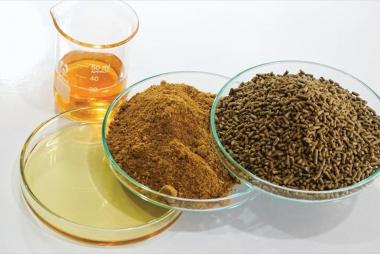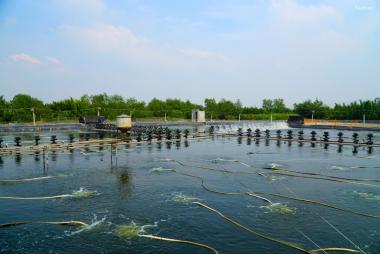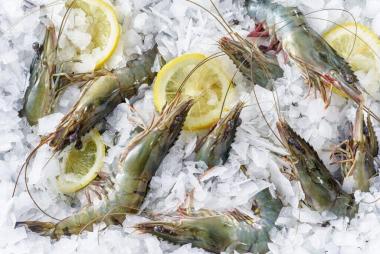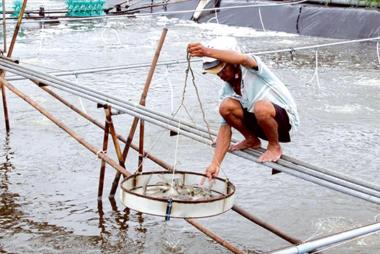- Address: Lot No. 20, Zone G, D1 Street, An Ha Industrial Park, Tan Vinh Loc Commune, Ho Chi Minh City
- Phone: (84-28) 668.36156 / 668.36158
- Hotline: 1800.9435
- Fax: (84-28) 3620.4694
- Email: vibo@vibo.com.vn
- Website https://vibo.com.vn/

Bac Lieu Province emerges as a model for high-tech shrimp farming
Amid rising climate change challenges and increasingly strict requirements from global markets, high-tech shrimp farming in Bac Lieu has become a breakthrough solution—delivering economic efficiency, environmental sustainability, and higher added value for Vietnam’s aquaculture sector.
From “shrimp capital” to high-tech hub
For many years, Bac Lieu has been known as Vietnam’s “shrimp capital”, with vast farming areas and high output, especially for black tiger shrimp and whiteleg shrimp. However, in the context of globalization and climate change, simply relying on traditional strengths is no longer enough. Transitioning to high-tech shrimp farming has become essential—not just as a trend, but as the key for Bac Lieu to retain its leadership and help elevate Vietnam’s shrimp value chain on the global stage.
The Mekong Delta, and Bac Lieu in particular, is among the regions most heavily impacted by climate change. Deep saltwater intrusion, drought, irregular flooding patterns, and more frequent shrimp diseases have created serious challenges for farmers. Traditional extensive and semi-intensive models are highly exposed to these risks, resulting in unstable yields and higher production uncertainty.

Global standards as a catalyst for innovation
International buyers—especially in the US, the EU, and Japan—are paying closer attention than ever to the origin, quality, and sustainability of shrimp products. Certifications such as ASC (Aquaculture Stewardship Council), GlobalG.A.P, and BAP (Best Aquaculture Practices) are both a technical challenge and a valuable opportunity to upgrade the value of Vietnamese shrimp. High-tech farming models allow for:
- Better control of input materials and farming processes
- Tight monitoring of antibiotic use and residues
- Easier compliance with stringent international standards
Recognizing the strategic importance of the shrimp sector, the Vietnamese Government and relevant ministries have issued supportive policies to encourage investment in high-tech shrimp farming. Since 2024, Bac Lieu has made remarkable progress in applying advanced technologies. According to provincial reports, the total high-tech shrimp farming area—including super-intensive, intensive, and semi-intensive models—reached approximately 32,987 hectares in 2024, fulfilling 112.2% of the annual plan and increasing by 113.14% compared with 2023. These figures reaffirm Bac Lieu’s determination to lead the nation in high-tech aquaculture.
Policy support and smart technologies driving growth
To achieve these results, Bac Lieu has proactively implemented specific programs and mechanisms to support businesses and farmers, including:
- Facilitating land access and farm consolidation
- Improving access to credit and investment capital
- Providing technical guidance and training
The province has also stepped up investment promotion for its High-Tech Agricultural Zone for Shrimp Development, attracting many major investors.
High-tech models—such as super-intensive systems in greenhouses or lined ponds with roofing—are becoming increasingly popular. Core technological innovations include:
- Recirculating aquaculture systems (RAS)
- Semi-recirculating water systems
- Automated water management, feeding, and environmental control
These models deliver exceptional productivity, typically 40–60 tons per hectare per crop, and in some cases reaching 80–100 tons, far surpassing traditional methods. At the same time, shrimp survival rates have improved significantly, reducing disease risk and production losses.
Data-driven shrimp farming in the Industry 4.0 era
Industry 4.0 technologies are now being applied directly at pond level in Bac Lieu. A network of sensors and monitoring devices continuously tracks key water quality parameters such as: Dissolved oxygen, pH, Salinity, Temperature, Alkalinity, Toxic gases (NH₃, H₂S).
The collected data is transmitted to central control systems or smartphone applications, enabling farmers to monitor ponds in real time and adjust aeration, feeding, and water exchange promptly.
Bac Lieu’s high-tech shrimp farming model is designed to meet global certifications such as ASC, GlobalG.A.P, and BAP, thereby boosting export credibility and competitiveness. Many enterprises are building integrated value chains that cover: Broodstock production, Hatchery and grow-out farming, Processing and value addition, Marketing and export
This integrated approach ensures traceability, strict quality control, and alignment with the expectations of high-end international buyers.
With better product quality and high, stable yields, Bac Lieu’s shrimp industry has strong potential for export growth, contributing meaningfully to both provincial GRDP and national GDP. In 2024, the province’s shrimp export figures showed encouraging signs, and further expansion is projected in 2025 and beyond.
A forward-looking vision for Vietnam’s shrimp industry
Bac Lieu’s high-tech shrimp farming model is on a strong upward trajectory, increasingly recognized as a key driver of Vietnam’s blue economy.
With the achievements to date, the province is steadily asserting its pioneering role in developing a modern, sustainable shrimp industry—one that contributes not only to food security and export growth, but also to enhancing the global image of Vietnamese shrimp.
Going forward, close collaboration between the Government, local authorities, businesses, and farmers will be crucial. By working together to expand high-tech models, strengthen environmental management, and enhance value-added processing, Bac Lieu can reach new heights and help bring Vietnamese shrimp into the most demanding markets worldwide.
Translation from VIBO news. Author of Vietnamese article: Adapted from VASEP (seafood.vasep.com.vn).














